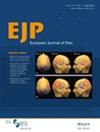A discrete choice experiment: Understanding patient preferences for managing chronic non-cancer pain
Abstract
Background
The management of chronic non-cancer pain (CNCP) is complex. Concerns about adverse effects associated with opioid pain medications and a lack of funding for holistic programs present challenges for decision-making among clinicians and patients. Discrete choice experiments (DCE) are one way of assessing and valuing patient treatment preferences.
Method
DCE attributes and levels were generated through qualitative research and included number of medicines, side effects from medicines, pain interference, care management, risk of addiction, activity goals, preferred source of information on pain management and willingness to pay. The survey was administered to participants with CNCP recruited through an existing cohort study (n = 442) and a sample of people living with CNCP recruited through Australia's leading pain advocacy body (Painaustralia) (n = 256).
Results
The median age of participants was 58 years (SD 12.0), the majority were female. The analysis revealed two latent demographic classes: a younger group with higher levels of private health insurance and an older group with lower levels of private health insurance coverage. There were notable differences in preference. The younger cohort exhibited a greater willingness-to-pay to reduce pain interference, whereas the older group prioritized GP management, preferred more medicines and expressed fewer addiction concerns.
Conclusion
Patients' treatment preferences diverged based on age and insurance status, underscoring the importance of understanding patient perspectives in treatment communication and care coordination. These findings provide insight into patient decision-making, which is important for promoting access to quality healthcare and engagement with evidence-based treatment of CNCP.
Significance Statement
A discrete choice experiment identified two groups: younger, with more private insurance, and older, with less private health insurance, each with unique pain management preferences. Clinicians should be aware that age and private health insurance may have an impact on a patient's preferences for CNCP management.

 求助内容:
求助内容: 应助结果提醒方式:
应助结果提醒方式:


